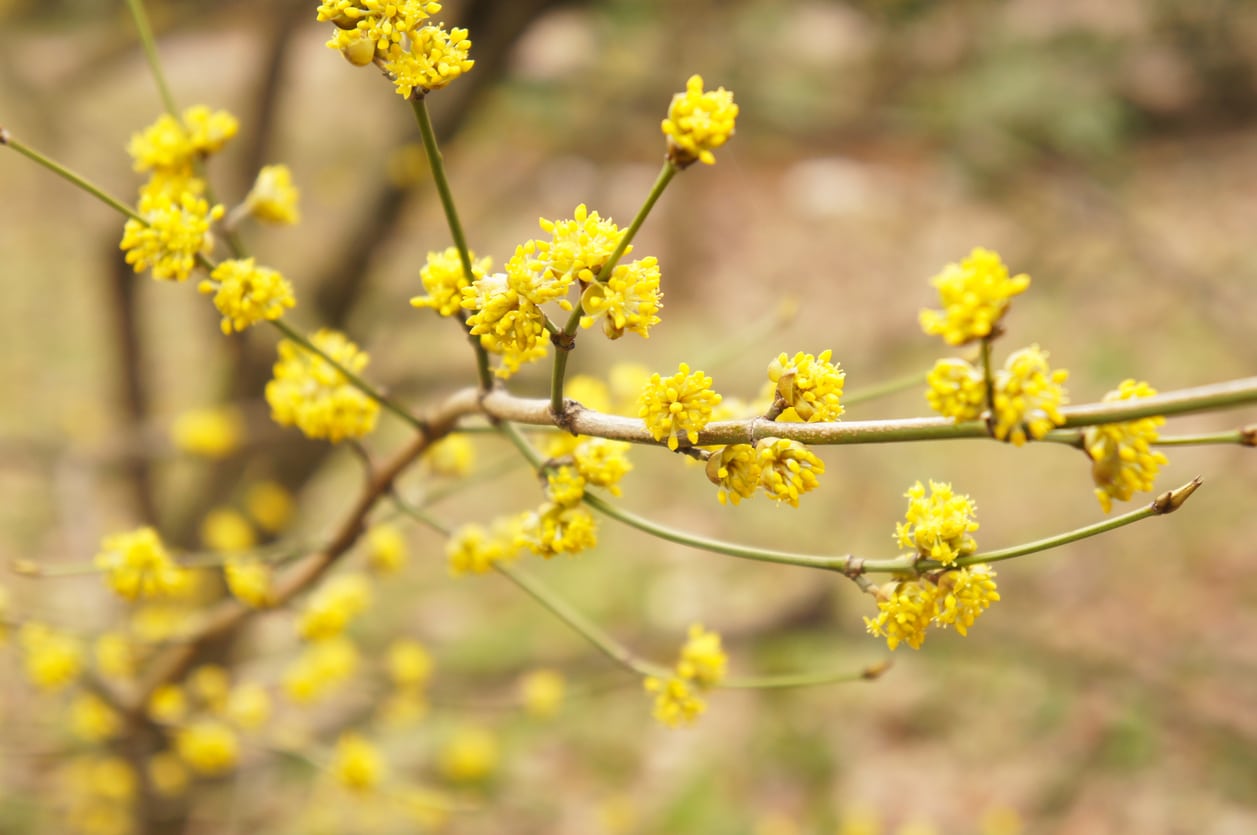Spicebush Information: Learn About Growing A Spicebush Plant


What is spicebush? Native to the eastern parts of North America and Canada, spicebush (Lindera benzoin) is an aromatic shrub often found growing wild in swampy woodlands, forests, valleys, ravines, and riparian areas. Growing a spicebush in your garden isn’t difficult if you live in USDA plant hardiness zones 4 through 9. Let’s explore how to grow spicebush.
Spicebush Information
Spicebush is known by a variety of names including spicewood, wild allspice, snap-bush, feverwood, and Benjamin bush. As the name suggests, the plant’s most distinctive feature is the spicy aroma that perfumes the air whenever a leaf or twig is crushed. A relatively large shrub, spicebush reaches heights of 6 to 12 feet (2-4 m.) at maturity, with a similar spread. The shrub is valued not only for its scent, but for the emerald green leaves which, with enough sunlight, turn a lovely shade of yellow in autumn. Spicebush is dioecious, which means that male and female flowers are on separate plants. The tiny yellow flowers are relatively insignificant, but they make an attractive display when the tree is in full bloom. There’s nothing insignificant about the showy berries, which are glossy and bright red (and loved by birds). The berries are especially noticeable after the leaves drop in fall. However, berries develop only on female plants, and this won’t occur without a male pollinator. Spicebush is a good choice for a butterfly garden, as it is the preferred food source for several butterflies, including black and blue spicebush swallowtail butterflies. The blooms attract bees and other beneficial insects.
How to Grow Spicebush
Lindera spicebush care in the garden isn’t at all difficult to achieve when the plant is given suitable growing conditions. •Plant spicebush in moist, well-drained soil. •Spicebush thrives in full sunlight or partial shade. •Fertilize spicebush in spring using a balanced, granular fertilizer with an NPK ratio such as 10-10-10. •Prune after flowering, if needed, to maintain the desired size and shape.
Sign up for the Gardening Know How newsletter today and receive a free copy of our e-book "How to Grow Delicious Tomatoes".

A Credentialed Garden Writer, Mary H. Dyer was with Gardening Know How in the very beginning, publishing articles as early as 2007.